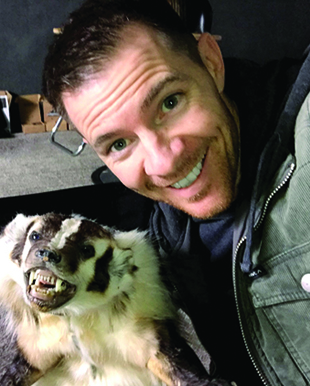Josh Eckman, CEO of Carterra and department of mechanical engineering alum, has been awarded the 2022 Entrepreneur of the Year® Mountain West Award by Ernst & Young LLP. This award is given to leaders of high-growth companies based on entrepreneurial spirit, purpose, growth, impact, and other attributes. Eckman will now also be considered by a national panel of judges for a national Entrepreneur of the Year award.
In addition to degrees in Business Administration and Asian Studies, Eckman received an M.S. in Mechanical Engineering with a microfluidics focus from the University of Utah. As part of his studies professor Bruce Gale, ME department chair and Eckman’s MS advisor, discussed with Eckman the the possibility of working to commercialize some of the projects they were working on at the time..
“Josh was in my sophomore-level dynamics class and getting one of the highest scores in the class,” said Gale, “then I found out he was a business major with an interest in engineering and I was doubly impressed. I knew this was someone I needed to talk to about some of the projects we were working on.”
Eckman identified a pending-patent from Gale’s for a technology he saw potential in pursuing, a biosensor that uses microfluidic technology to analyze samples much faster than general biosensors. He and his team went on to write a business plan and submitted to the Utah Entrepreneur Challenge, which they went on to win in 2005.
This start would go on to become Carterra, a leader in high-throughput biotherapeutic discovery and characterization technology. The company’s flagship LSA platform uses high-throughput Surface Plasmon Resonance technology, which is now a standard in 17 of the largest 20 pharmaceutical companies, biotechs, CROs, and government labs. In 2020, Eli Lilly and Abcellera discovered Bamlanivimab, the world’s first COVID-19 therapeutic, using the LSA platform in a 90-day sprint.
When talking about entrepreneurship, Eckman is clear on the potential for positive impact as well as the challenges.
“Working in a small company is a unique experience that can be quite challenging and thrilling,” said Eckman. “It is not the right fit for everyone, but for those that are wired for entrepreneurial endeavors and have a reasonable threshold for risk-taking, it is a great way to leave your mark on the world.”
Eckman also offered advice to students currently in school.
“Enjoy your time in school, it goes very quickly,” said Eckman. “Get involved in various groups and clubs, try new things, meet new people, broaden your exposure to different ideas and perspectives. Your working life will generally entail focusing on niche areas. Now is the time to develop a solid foundation and build the habits of life-long learning.”



 chromosome purification. Such a device would enable the development of an improved intercellular chromosome transfer process.
chromosome purification. Such a device would enable the development of an improved intercellular chromosome transfer process.




